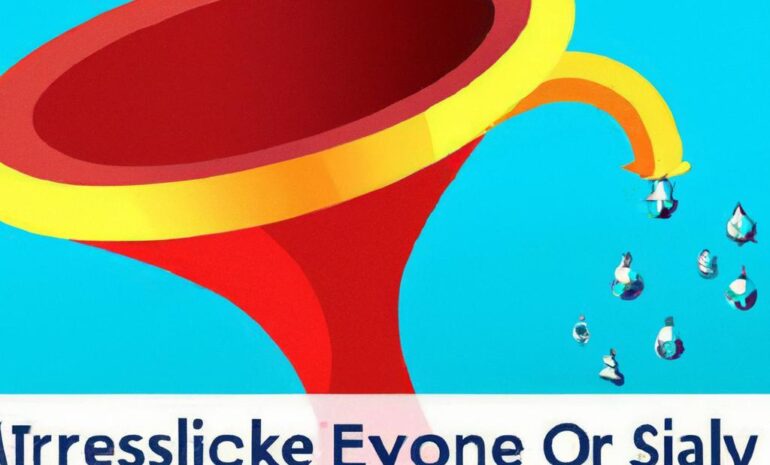The Future of Paid Media: How to Adapt Your Strategy
In today’s rapidly changing digital landscape, paid media strategies must evolve to keep pace with consumer behavior and technological advancements. As businesses increasingly shift their focus to online channels, understanding the future of paid media becomes paramount. In this article, we’ll delve into emerging trends, practical tips, and actionable insights that will help you adapt your paid media strategy for maximum effectiveness.
Understanding the Evolution of Paid Media
Paid media encompasses various digital advertising channels where businesses pay to reach their target audience. This includes:
- Search Engine Advertising (e.g., Google Ads)
- Social Media Advertising (e.g., Facebook, Instagram, LinkedIn)
- Display Advertising
- Native Advertising
- Video Advertising (e.g., YouTube)
As we look forward, it’s essential to assess how these channels are evolving due to technology, consumer preferences, and market dynamics.
Key Trends Shaping the Future of Paid Media
1. Increased Focus on Personalization
Personalization in paid media is no longer a luxury; it’s a necessity. Brands must create tailored experiences based on user behavior, preferences, and demographics. Here’s why:
- Higher Engagement: Personalized ads resonate more with consumers.
- Improved ROI: Targeted campaigns yield better conversion rates.
2. Integration of Artificial Intelligence (AI)
AI is transforming the landscape of paid media, allowing advertisers to automate and optimize their campaigns effectively. Key benefits include:
- Enhanced Targeting: Machine learning algorithms analyze user data to target ads more accurately.
- Dynamic Creative Optimization: AI allows real-time adjustment of ads based on performance.
3. The Rise of Voice Search and Audio Advertising
With the popularity of smart speakers and voice assistants, advertisers need to adapt their strategies for voice search. Consider these aspects:
- Emphasize long-tail keywords to align with natural speech patterns.
- Explore audio advertising opportunities on platforms like Spotify and podcast networks.
4. Video Marketing Dominance
Video continues to be a dominant medium for storytelling. It’s vital for paid media strategies to capitalize on this trend:
- Videos can increase engagement rates significantly compared to image-only ads.
- Consider live-streaming and ephemeral content (stories) for real-time connections.
5. Shift Toward Privacy and Transparency
With increasing scrutiny on data privacy, marketers must prioritize transparency and ethical practices. Strategies to consider:
- Clearly communicate data usage to users.
- Adopt privacy-first marketing practices to build trust.
Benefits of Adapting Your Paid Media Strategy
- Improved Audience Targeting: Reach users more effectively with personalized content.
- Stronger Brand Awareness: Create memorable campaigns that resonate with your audience.
- Enhanced Data Usage: Use insights from consumer data to make informed decisions.
- Higher ROI: Streamlined strategies lead to better budget allocation and resource use.
Practical Tips to Adapt Your Paid Media Strategy
1. Invest in Data Analytics
Utilize data analytics tools to analyze user behavior and campaign performance. Tools like Google Analytics, Facebook Insights, and SEMrush can provide invaluable information for refining your strategies.
2. Test and Optimize Continually
A/B testing should be an integral part of your paid media strategy. Regularly analyze which ad creatives, copy, and targeting strategies perform best, and optimize accordingly.
3. Diversify Channels
Don’t rely solely on one platform. Diversifying your paid media efforts across multiple channels can help mitigate risk and maximize reach and engagement.
4. Keep Up with Industry Trends
Subscribe to industry newsletters, attend webinars, and participate in forums to stay updated on the latest trends and technologies in paid media.
Case Study: Successful Adaptation in Paid Media
Company: XYZ Fashion
Challenge: XYZ Fashion faced declining engagement rates with their traditional ad campaigns. They needed to refresh their approach to reach a younger demographic effectively.
Solution: By leveraging AI for data analysis and personalization, they targeted ads based on browsing history and purchase patterns. They incorporated short video ads on social media platforms, resulting in a more engaging user experience.
Results:
- 50% increase in user engagement
- 30% rise in conversion rates
- Established a stronger brand presence among the younger audience
First-hand Experience: My Journey in Paid Media
In my experience managing paid media campaigns, I quickly learned the importance of being adaptable. Early on, I faced a plateau in my campaigns’ performance. By embracing AI tools for better targeting and investing in video content, I saw a significant boost in engagement. The willingness to pivot strategies based on analytics and emerging trends is essential for success in the ever-evolving world of paid media.
Conclusion
As we move forward in 2024 and beyond, the future of paid media is bright but demanding. Brands must remain agile, prioritize personalization, leverage the advantages of AI, and commit to transparency. The integration of emerging technologies and consumer-centric strategies will be key to driving successful campaigns. By investing in data analytics, diversifying channels, and cultivating a culture of continual testing and optimization, businesses can not only adapt but thrive in the fast-paced world of paid media.
Start evolving your paid media strategy today, and position your brand for unprecedented success tomorrow!


